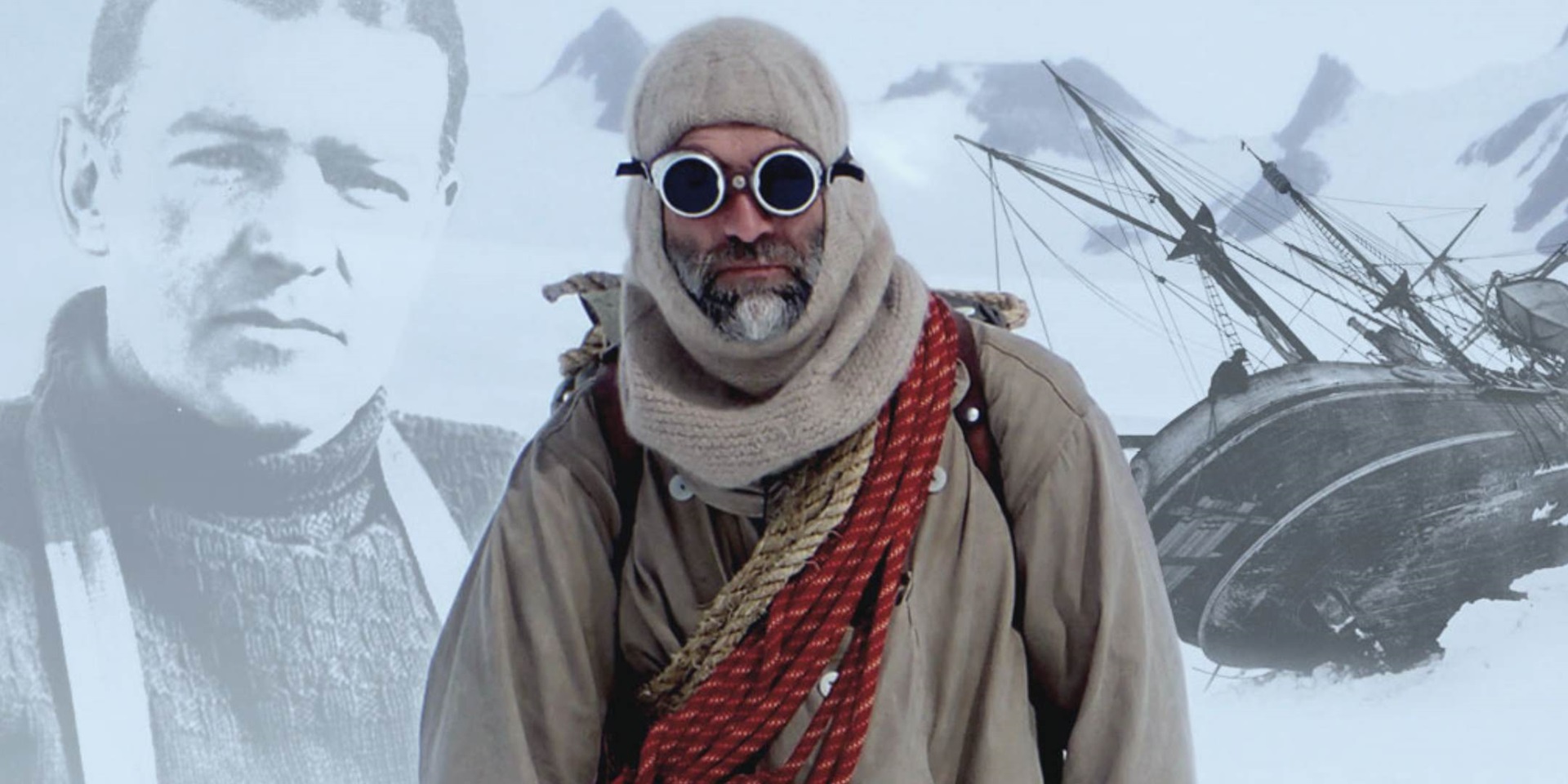
Nearly 100 years ago, one of the most compelling adventure and survival stories of all time unfolded in Antarctica: Sir Ernest Shackleton’s Imperial Trans-Antarctic Expedition of 1914–17. The story comes to life through a major exhibition at the Australian National Maritime Museum: Shackleton: Escape from Antarctica.
Sir Ernest Shackleton on board Aurora, January 1917. Photographer: Andrew Keith Jack. Courtesy State Library of Victoria, H82.45/60
On 9 February 1917 the barquentine SY Aurora entered Wellington Harbour after a seven-week return voyage to McMurdo Sound in Antarctica. On board were seven men and four sledging dogs returned from the icy continent – survivors of a remarkable two-year ordeal on the ice which had seen ships lost and men perish. Also on board was the man who had led the expedition, the famed Antarctic explorer Sir Ernest Shackleton.
It was the final chapter in the 43-year-old adventurer’s bold plan of 1914 to be the first to cross Antarctica via the South Pole. Shackleton intended to have two parties working from opposite sides of the continent.
He would lead the sledging party on the 2,700-kilometre march across from the Weddell Sea coast, while a support party, led by Captain Aeneas Mackintosh, the second-in-charge on his earlier Nimrod expedition, would approach from McMurdo Sound in the Ross Sea to sledge to the interior and lay critical rations ahead of them. It was an incredibly dangerous venture.
But war clouds were gathering and fundraising proved difficult. After Shackleton requested assistance from the Royal Navy, Winston Churchill, First Lord of the Admiralty, said:
‘Enough life and money has been spent on this sterile quest. The Pole has already been discovered. What is the use of another expedition?’ (Stephanie Barczweski, Antarctic Destinies, p. 88).
Map of the projected sea routes taken by Endurance and Aurora, c. 1914–1917. Photographer: Andrew Keith Jack. Courtesy State Library of Victoria, H82.45/2
Shackleton was forced to fund his expedition privately, although the British government did award him a grant. He purchased two ships at reduced prices. One was a sturdy 44-metre barquentine built in 1912 as Polaris to take tourists on Arctic polar-bear hunts. It was very strong, with a 2.2-metre thick keel, reinforced frames, and timber planking up to 76 centimetres thick. He renamed it Endurance, after his family motto Fortitudine vicinimus, ‘By endurance we conquer’. This vessel was to lead the expedition and carry the crossing party from the UK.
The second ship, Aurora, was a seasoned Arctic and Antarctic traveller built as a whaling and sealing vessel some 40 years earlier. It was to ship the second party from Australia to the Ross Sea to lay supply depots.
Shackleton bought the Aurora, sight unseen, from London. It was in already in Australia having recently returned from Antarctic transport and survey work for Sir Douglas Mawson’s Australasian Antarctic Expedition of 1911-14.
Of thousands who applied, 26 crew were assigned to Endurance and 27 to Aurora. On Endurance these included Antarctic veterans Irishman Tom Crean, Englishman Frank Wild, artist George Marston, carpenter Henry Harry ‘Chippy’ McNish and Australian photographer Frank Hurley. On Aurora, the crusty and experienced Ernest Joyce was to be in charge of dogs and stores for the sledging parties. War was imminent though, and experienced mariners were few.
When the Ross Sea Party arrived in Hobart, Mackintosh, dismayed at Aurora‘s condition and lack of equipment and his expedition finances, scrambled around to organise its repair at Cockatoo Island, Sydney, calling in help to fund this and provisioning.
Aurora berthed in Sydney Harbour loading stores for the Ross Sea Party, December 1914. William Hall Studio. Australian National Maritime Museum Collection, gift from Mr and Mrs Glassford.
On 1 August 1914 Endurance was in London preparing to sail for Argentina. That very day war was declared in Europe. Shackleton, conflicted, offered his ship and men to the war effort. The reply from both Winston Churchill and the King was to proceed, so Captain Frank Worsley sailed Endurance south to Argentina where Shackleton met them, Frank Wild arrived with the dogs and photographer Frank Hurley arrived from Australia. With great fanfare the expedition left Buenos Aires for the island of South Georgia.
Elevation and plan of the upper deck of Endurance. The Queenslander (Brisbane, Qld. : 1866 - 1939) 19 Sep 1914: 29nla.gov.au/nla.news-page2502852
On 5 December 1914, the onset of summer, Endurance, with Shackleton, 27 men (the original 26 plus a stowaway), more than 50 dogs and the ship’s cat farewelled the whalers of South Georgia. They had waited a month on the island for the unusually icy seas to clear.
Crew on the bow of Endurance as it enters the pack ice.
Crew members attempt to cut Endurance free, 14 February 1915. Photographer: Frank Hurley. Courtesy National Library of Australia, nla.pic-an23478569
Only days later, and earlier than expected, Captain Frank Worsley was navigating the ice at the 57th parallel, wedging his ship into waterways, following leads in the ice field, and ramming the ice pack under full steam. This continued for five weeks.
When they reached Coats Land on 10 January 1915, Worsley advocated to land. But it was further north than Shackleton planned and valuable stores would be used if the trans-continental team were to set out from that point, so Shackleton pressed on.
Less than a week later, Endurance was engulfed by ice at 76°34’S, 31°30’W, north of their destination of in Vahsel Bay (off the Ronne Ice Shelf): ‘The ship was a hopeless atom, locked in and drifting helplessly with the pack’, wrote Frank Hurley.
The onset of winter. Endurance trapped in the ice. Photographer: Frank Hurley. Australian National Maritime Museum Collection
